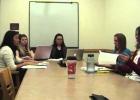Discovery Practicum
I believe that teaching and learning can be fun. But I also believe that it can be fun only if both parties work hard at it, day in, day out. That sounds contradictory but it is not. “When is it fun to work hard?” It is only through effort that learning happens. The feeling of mastering a subject can be tremendous fun for the student.
20 students per semester
First time administration of the course: Fall, 1993
Most recent administration of the course: Spring, 2011
This is a whole course simulation.
This course is an upper level practice-focused course in the law of Civil Discovery. I have taught this course at least a dozen times in this form. I created the course to address the lack of practical courses on discovery in most law school curricula. Of course, most law schools have numerous trial advocacy courses, but rarely is a recent graduate at a litigation firm or government office going to be trying cases. Instead they will—sometimes for several years—be mostly involved in the discovery process, preparing interrogatories, reviewing document requests, etc. This course addresses the need of recent graduates going into civil litigation firms to have an understanding of the applicable rules and law, as well as experience actually preparing the documents most common in the discovery phase of litigation.
This course was a Carnegie integrated course before such a thing existed. It integrates doctrine, skills, and professional identity in myriad ways throughout the semester. Students read in the text about the rules, as well as about strategy - when and how the rule is deployed in practice. Then they go to the online supplement to the text to read the rule and important cases interpreting that rule. Then they come to class, and the assignment for the next class is to prepare the litigation document just studied in the simulated litigation we work through all semester, and then serve it on their opposing counsel (a fellow student) at the next class.
When I left law school and joined a litigation firm in New York, I soon learned that I would be working with the discovery process on several complex commercial litigations. Unfortunately, I had not learned how to do any of this work in law school – no such course existed. When given the opportunity by the DU Law School in 1992 to create a course to address that problem, I did so, in the hope that at least the students in this course would never be in the same situation that I was.
This is an upper level practicum course, with a heavy writing component, set in a whole-course simulation using a set of detailed and realistic problem materials. The problem materials contain the files and witness statements of six fact witnesses, as well as two expert witnesses. The expert witnesses also have detailed reports in their files, while each fact witness has myriad documents in their files, such as doctor’s records and internal e-mail messages.
A syllabus and the course policies documents are included in this portfolio.
The course policies document includes (on the first page) the course goals and learning outcomes.
Lecture / Cooperative Groups / Group Discussion / Oral Presentation / Group Research Projects / Simulation (Whole-Course) / Peer Teaching
One example of an assignment that supports these teaching methods has been included in this portfolio.
Each week, students complete one discovery document, and one memo to the professor about the assignment. The document they file is based on the information they have at that point in the semester, and they learn more information about the simulated problem set as the semester goes along, using the discovery rules to learn that information. The memo to the professor about the assignment addresses the following topics: 1) the process the student went through to complete the assignment, 2) the student’s strategy in preparing the discovery document, and 3) the student’s reflection on the ethical issues posed by the assignment, and efforts made to address them.
Each discovery document is graded using one of two rubrics, depending on whether the assignment is a “requesting” document (that is, one that asks for information under the rules) or a “responsive” document. These rubrics are returned to the students each week. Students also engage in five different quizzes online during the course, and conduct a deposition, which is separately graded. They also keep track of the information they learn through the course of the semester in CaseMap—a database program using widely in practice.
One example of student work product is included with this portfolio.
Because the students receive formative feedback (in the form of the weekly rubric and written comments on their documents), I believe that student learning is improved by this feedback. My evidence of that is primarily found in two sources: that their grades on the rubric generally improve over the course of the semester, and comments made in student evaluations of the course.
I have included with this portfolio one set of student evaluations from the course administration for the Spring semester 2010.
In terms of plans for the future of the course, my biggest challenge is to “scale” the course beyond 20 students per semester. The “bottleneck” for such an expansion is primarily in the formative feedback that I provide each student each week. Even with a fairly streamlined rubric, providing formative feedback on twenty 5-10 page papers every week is a substantial investment of time. To scale the course, the formative feedback would have to be accomplished in a different way. Perhaps through a combination of peer assessment (after training and guidance), cohort group work, and the use of teaching assistants, scalability of the course could be achieved.


